Alation Analytics V2 Database Model¶
Alation Cloud Service Applies to Alation Cloud Service instances of Alation
Customer Managed Applies to customer-managed instances of Alation
Applies from version 2020.3
Schema and Tables Explained¶
The Alation Analytics V2 package includes:
A data dictionary with descriptions of all tables and recommendations on how to do JOINs.
Sample queries — to be found in the Description field of the schema Public
Documentation in the form of Alation articles that explains the Alation Analytics V2 schema and some of the best practices for writing queries:
Introduction to Alation Analytics — Article describes tables in Alation Analytics V2 and relationships between them
Alation Analytics ERD — Article contains the entity relationship diagram (ERD) of the Alation Analytics V2 database
The data dictionary and the articles are available in Alation after the Alation Analytics V2 database has been initialized and this data source becomes available in the Alation catalog. Use Search to find the articles by their titles.
The qli_events Table Limitations¶
The table qli_events is intended to provide a comprehensive view of data consumption at the data source, query, and user levels. Users need to be aware of these limitations:
The
qli_eventstable is activated on demand. Please reach out to your account executive or Alation Support for activation. After activation, the data will become available after an ETL run.The
qli_eventstable supports only one month (approximately 30 million rows combined) of historical data at the time of activation.After activation, the table supports up to 90 days of additional data over the historical data populated at the time of activation.
Currently, the
qli_eventsdata is only in General Availability (GA) for Snowflake data sources. We aim to expand the General Availability to include more data sources in future releases.
Alation Analytics V2 ERD¶
These images can be opened in a new browser tab for a detailed view (right-click on the image > open in a new tab).
Version 2024.1.3¶
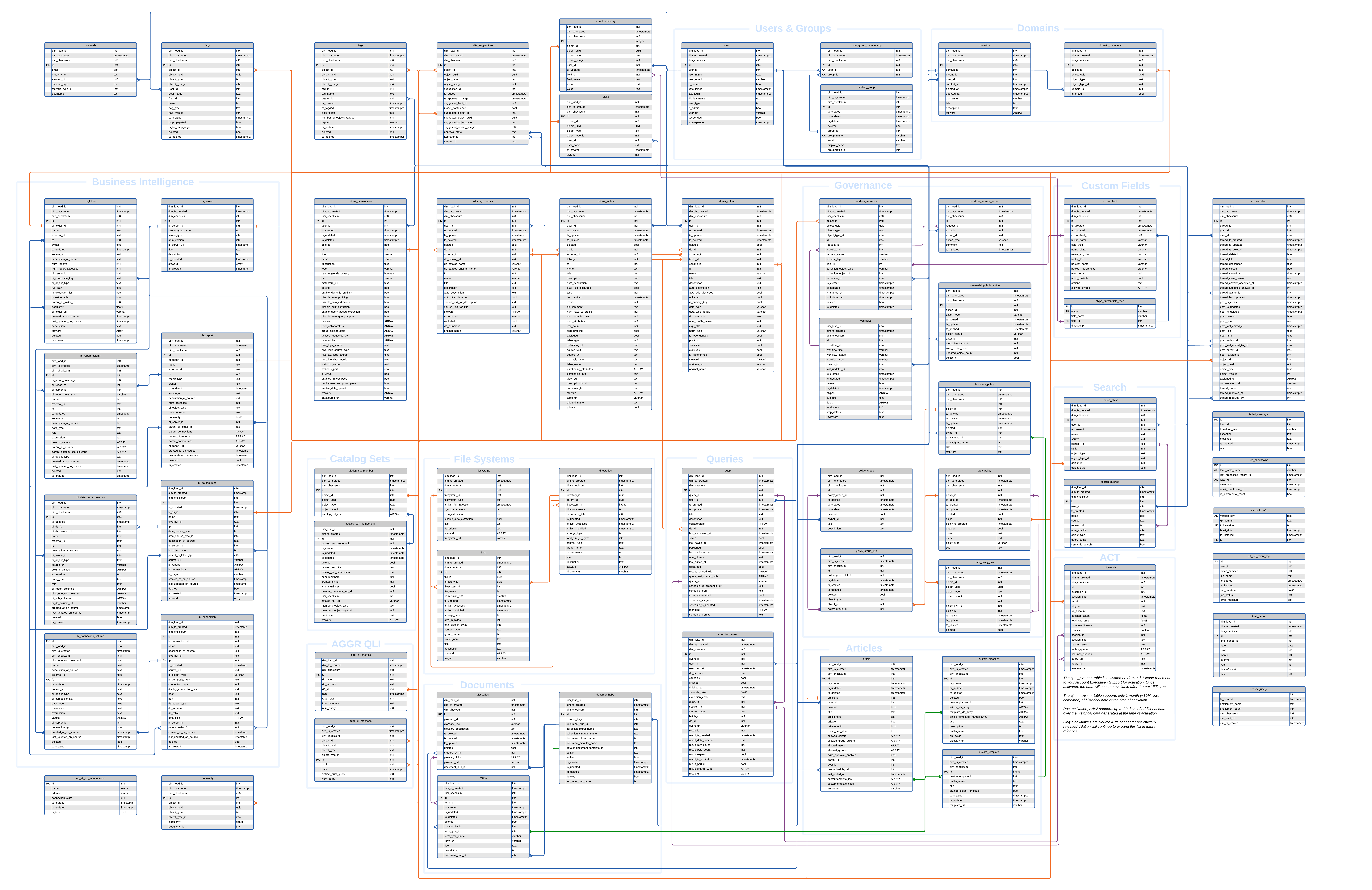
Version 2024.1.1¶

Version 2024.1¶
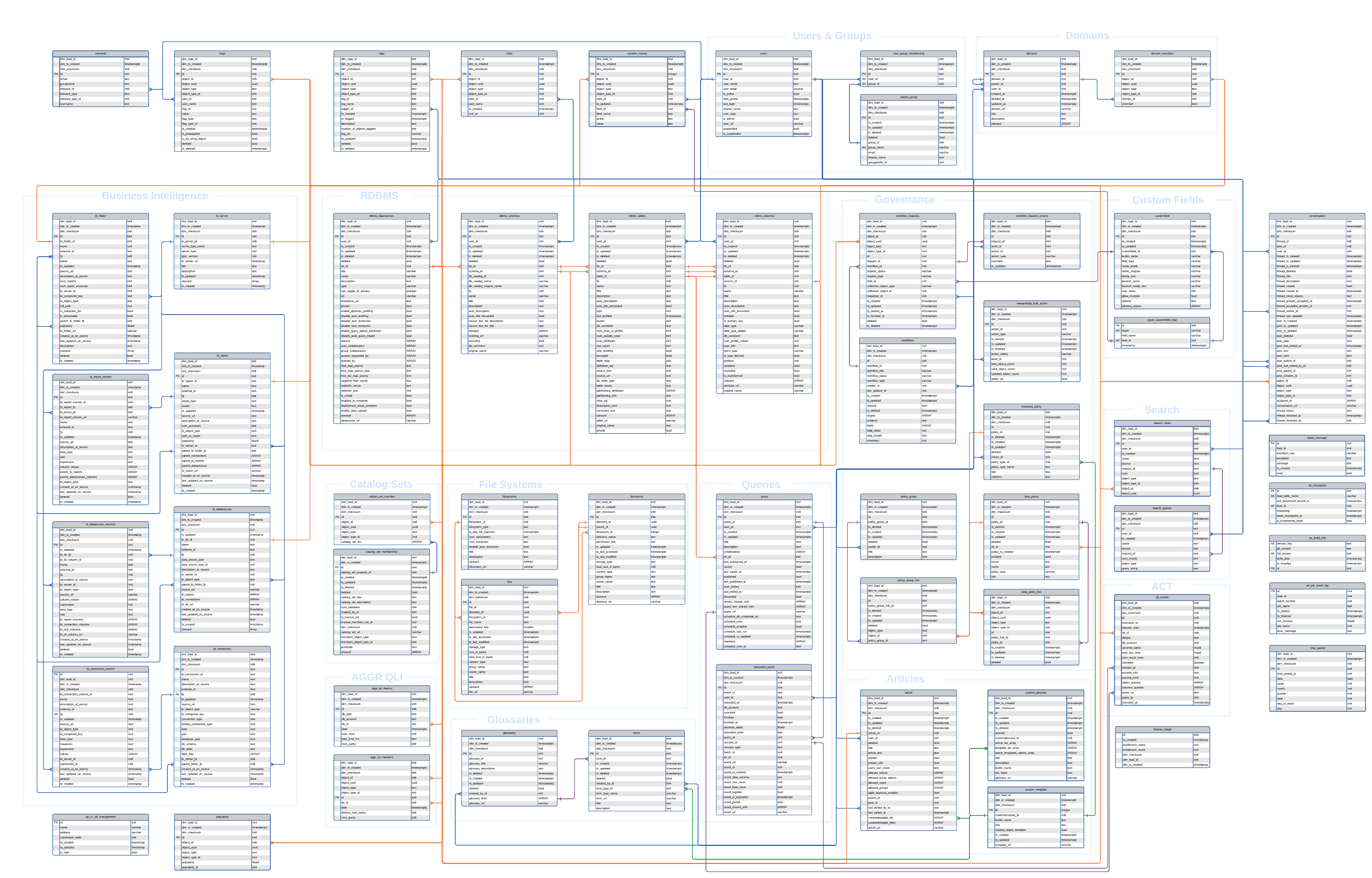
Version 2023.3.5¶
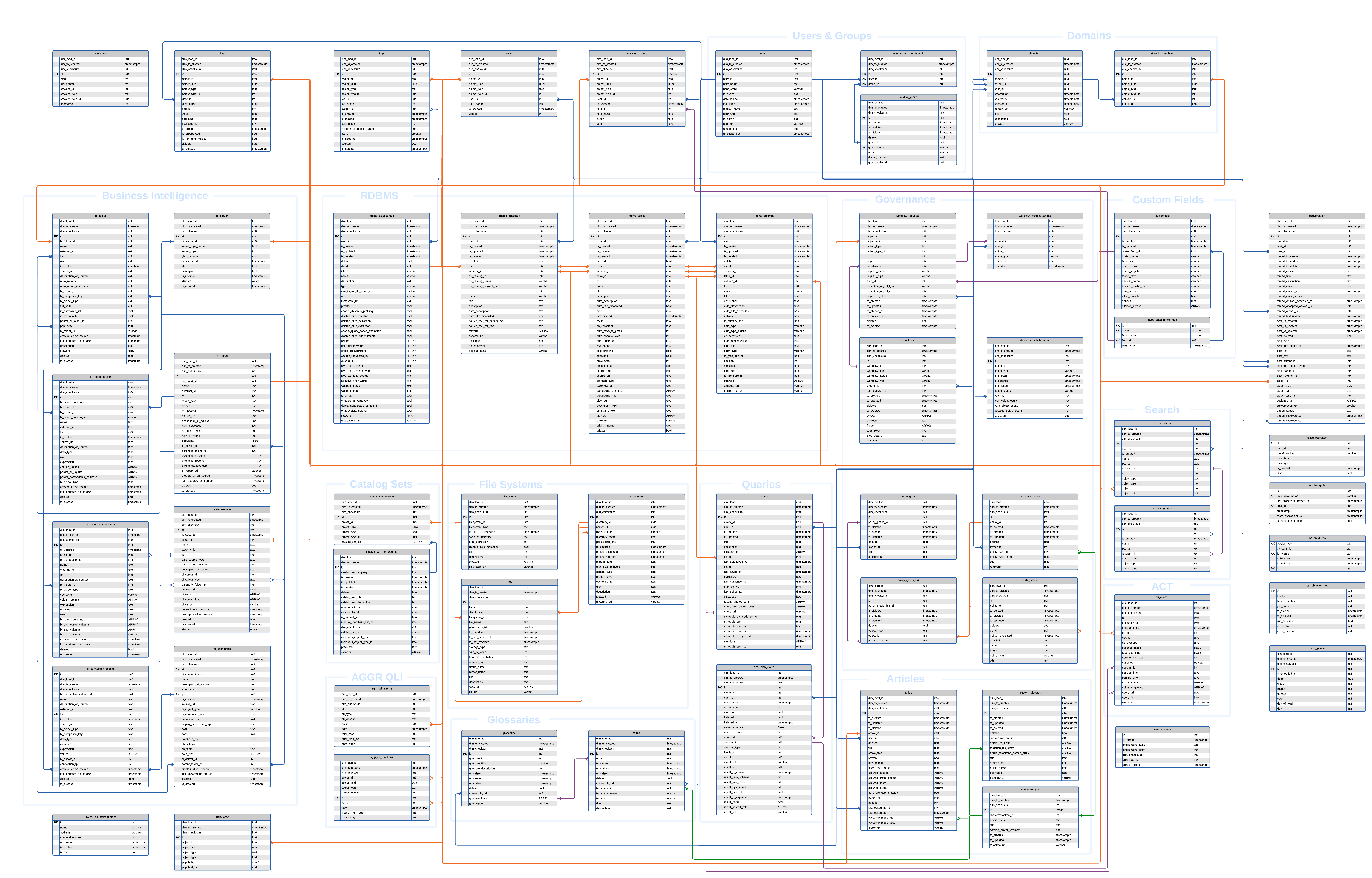
Version 2023.3.3¶
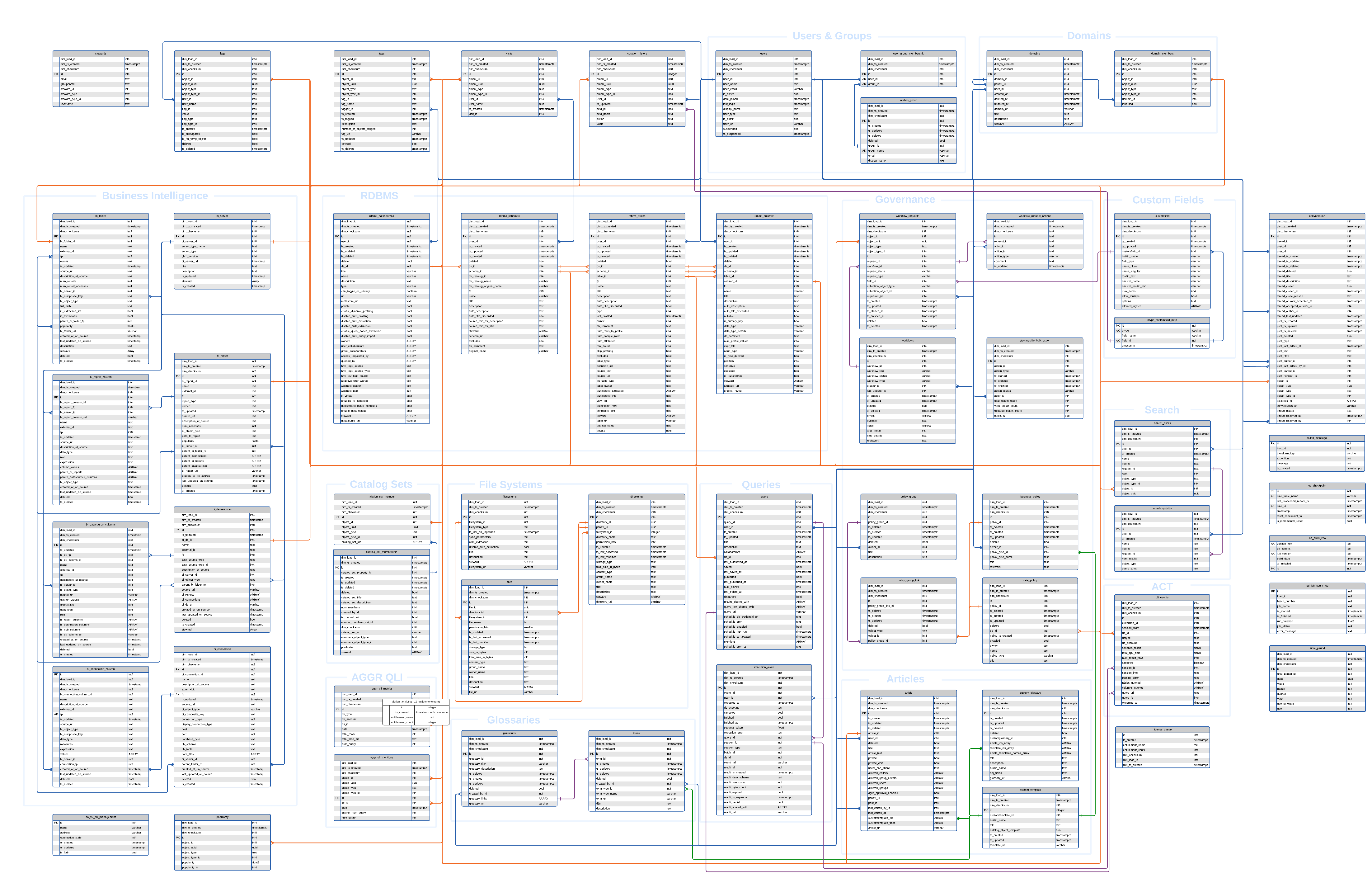
Version 2023.3.2¶
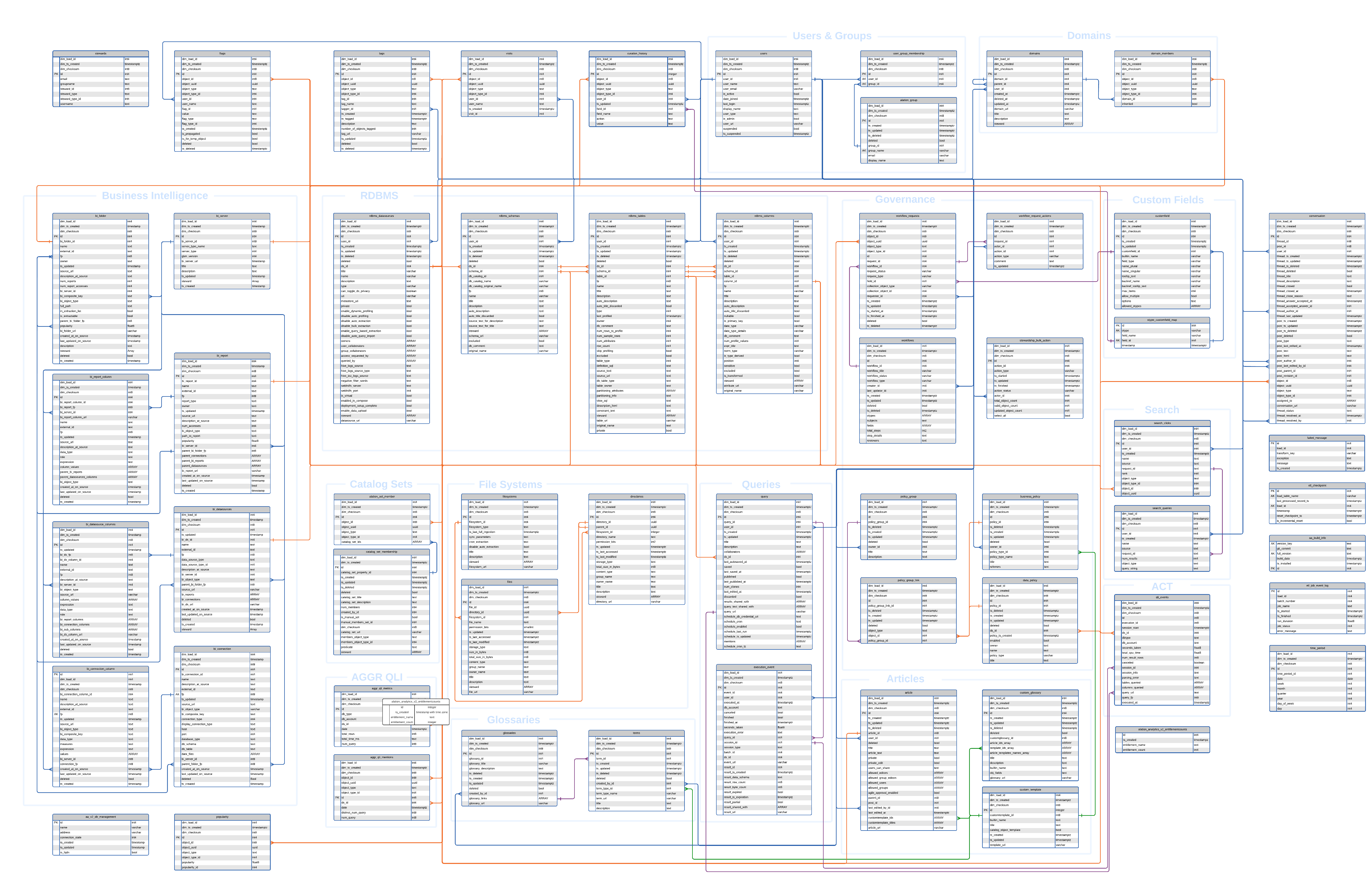
Version 2023.3.1¶
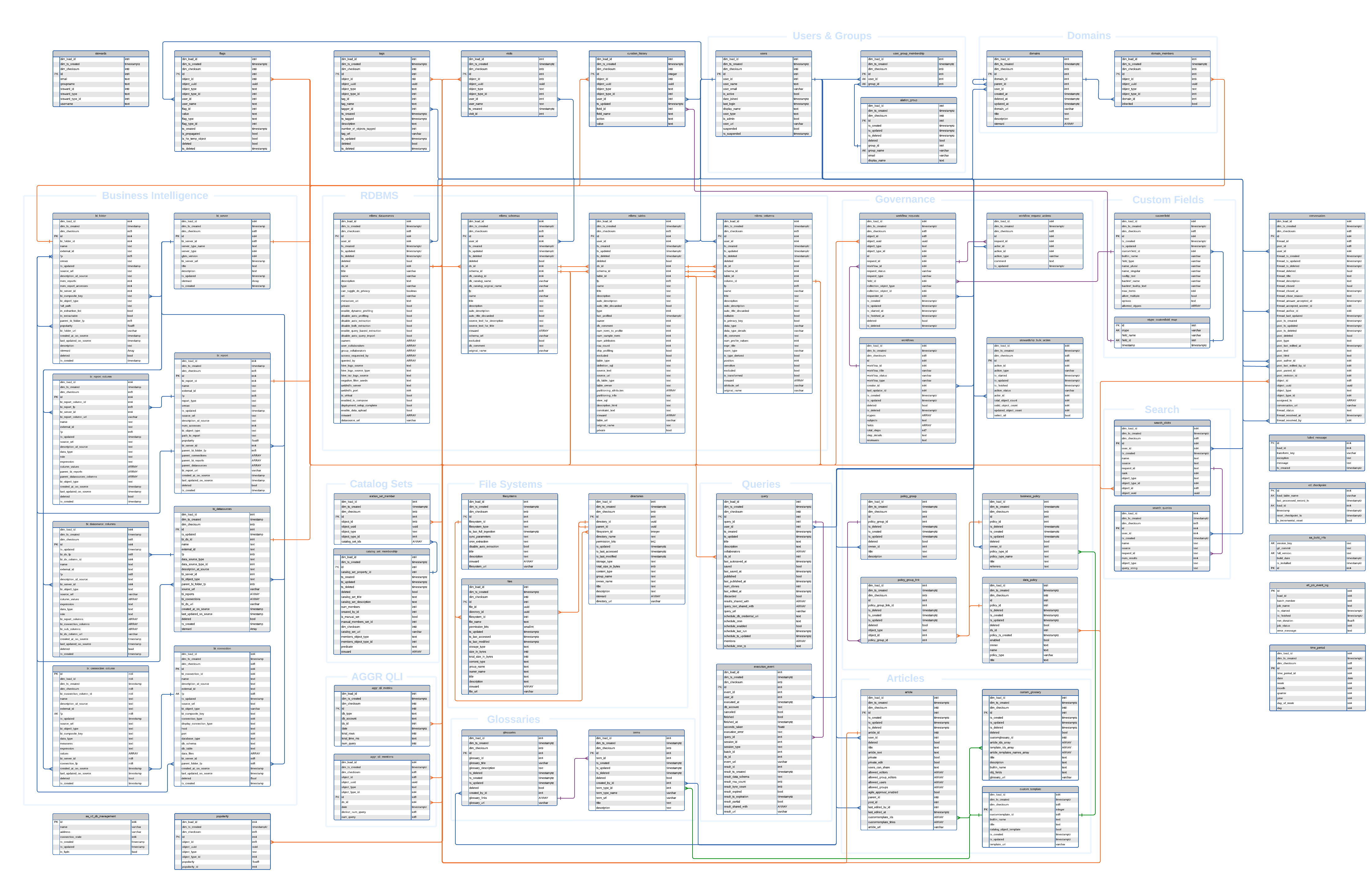
Version 2023.3¶
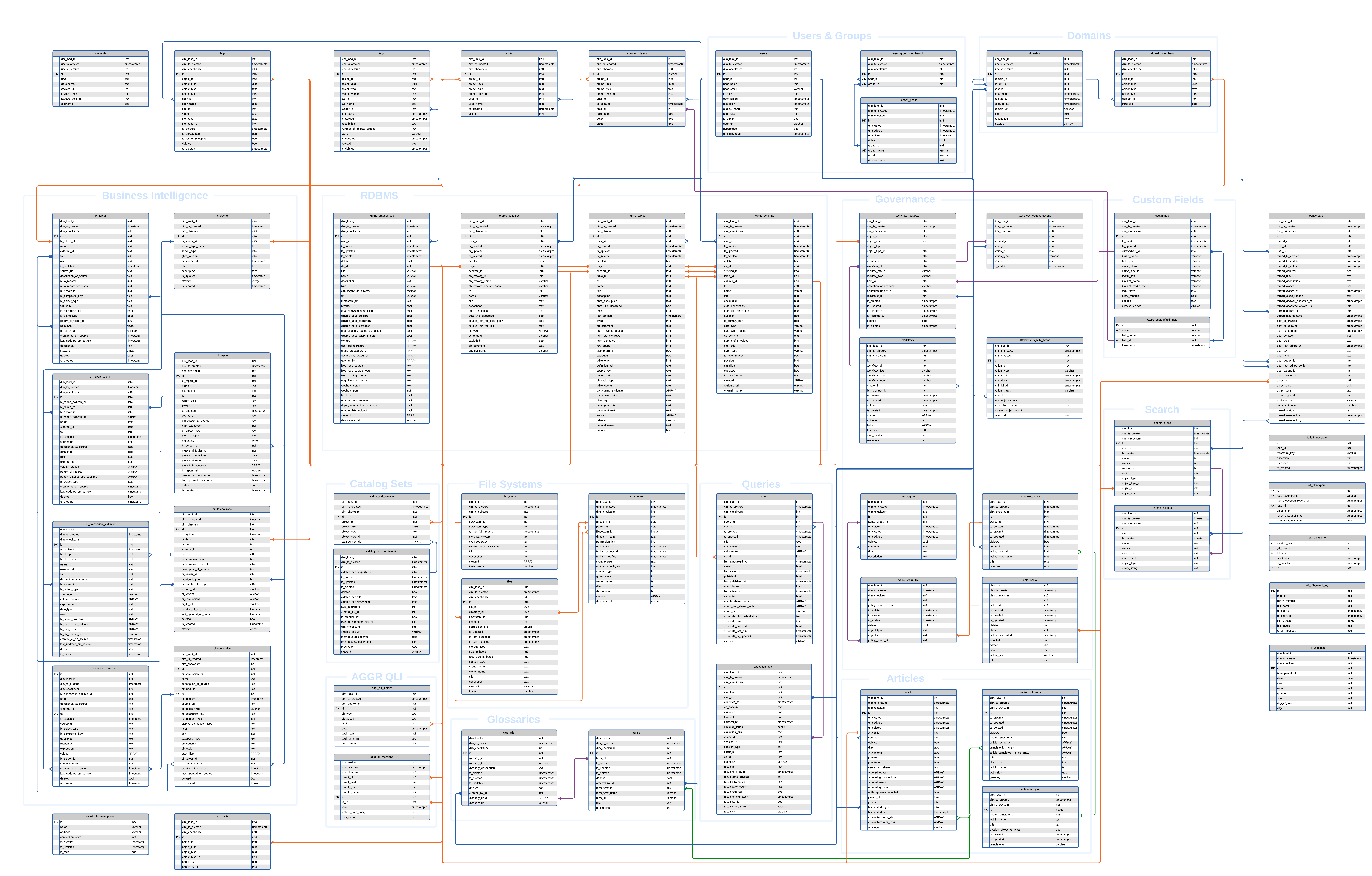
Version 2023.1.7¶
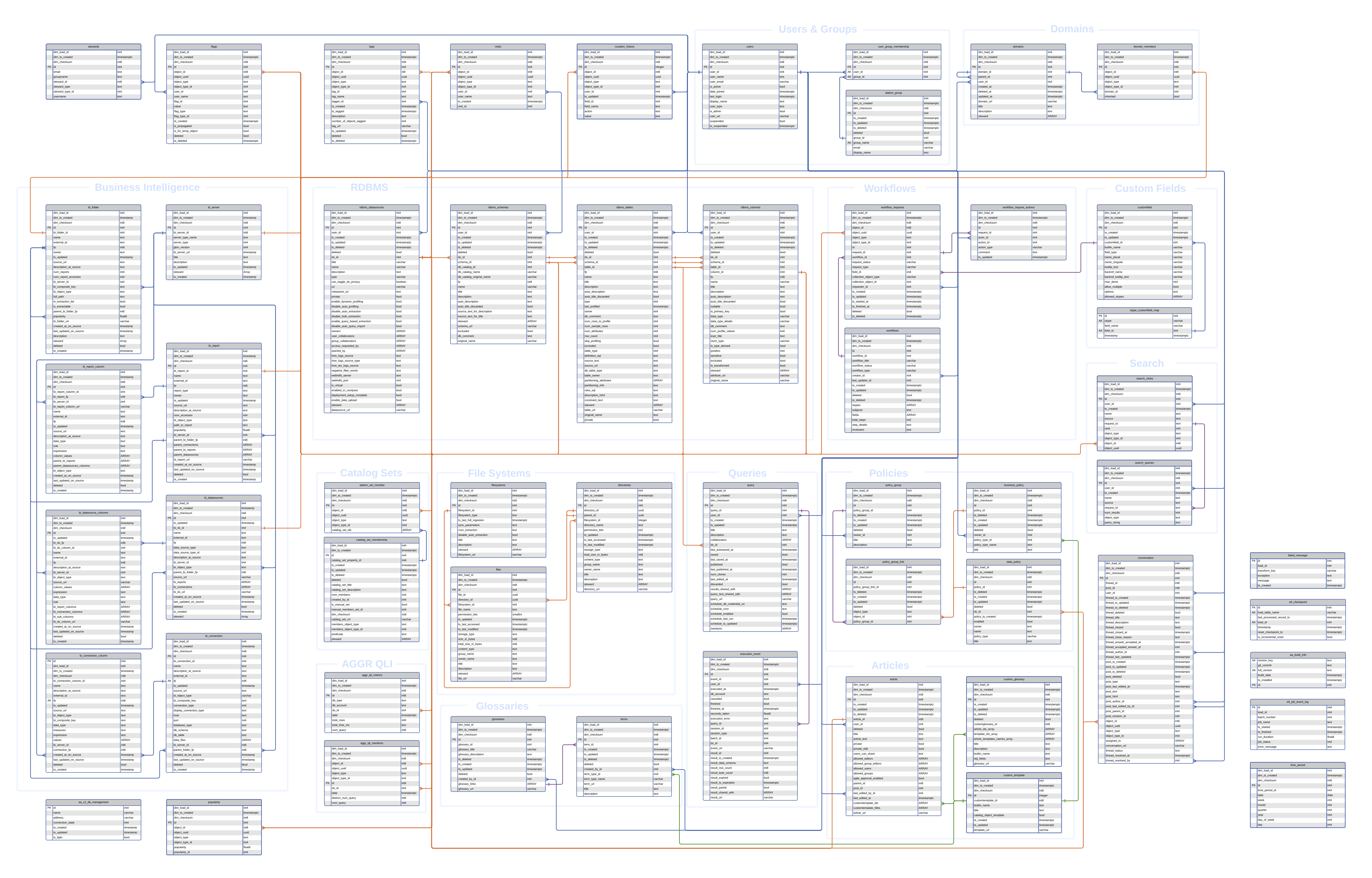
Version 2023.1.5¶
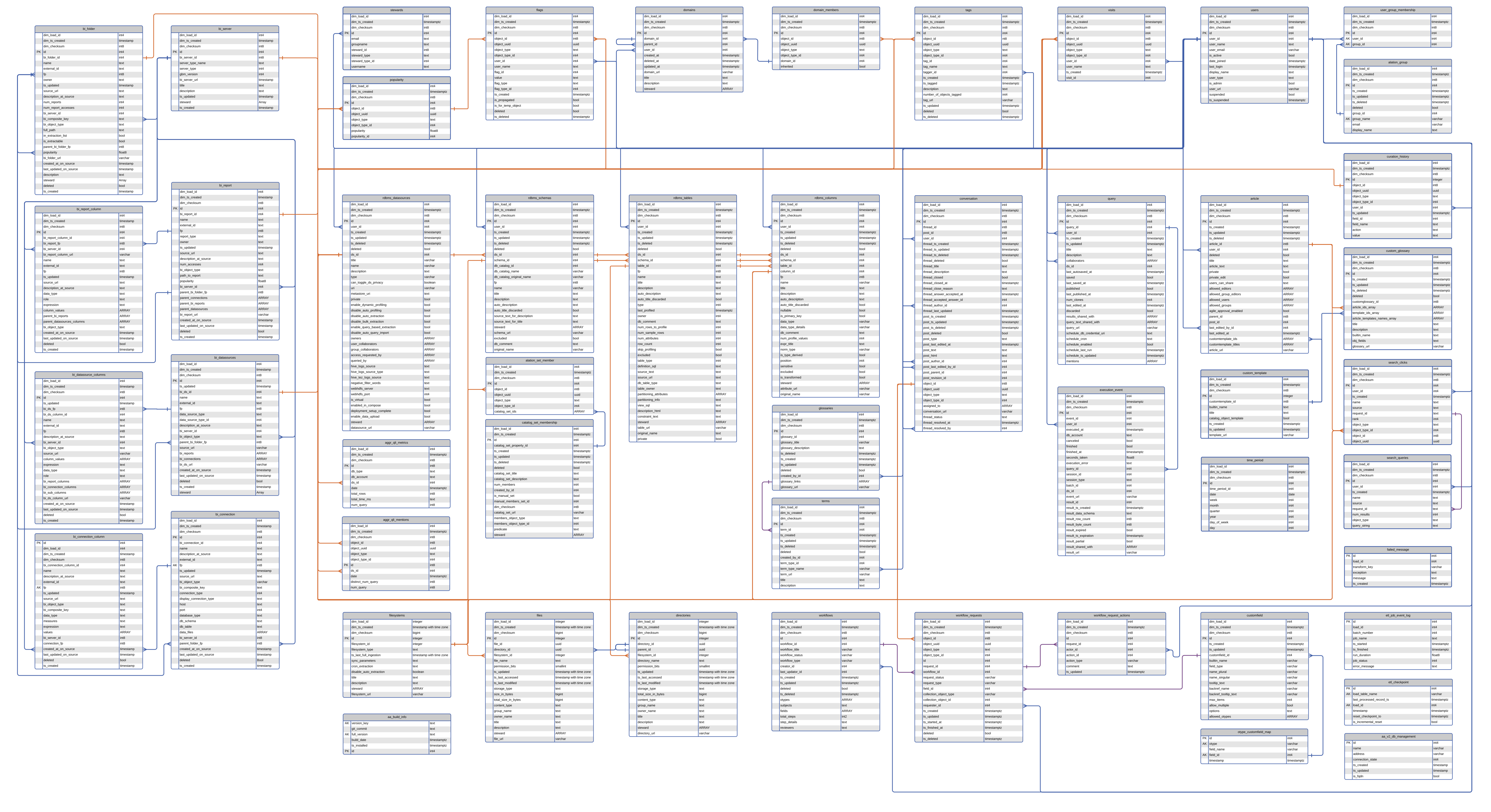
Version 2023.1¶
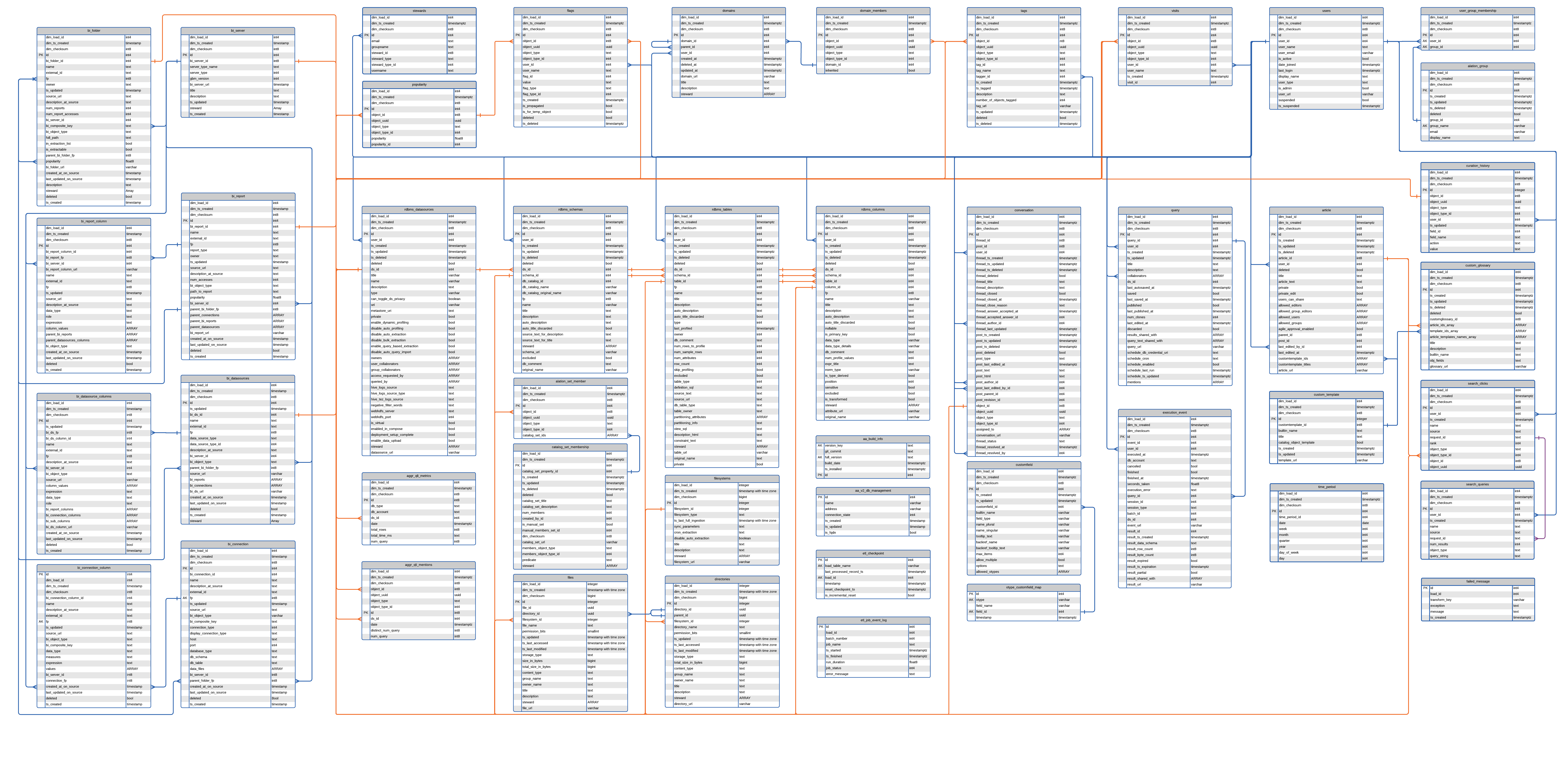
Versions 2022.2 to 2022.4¶
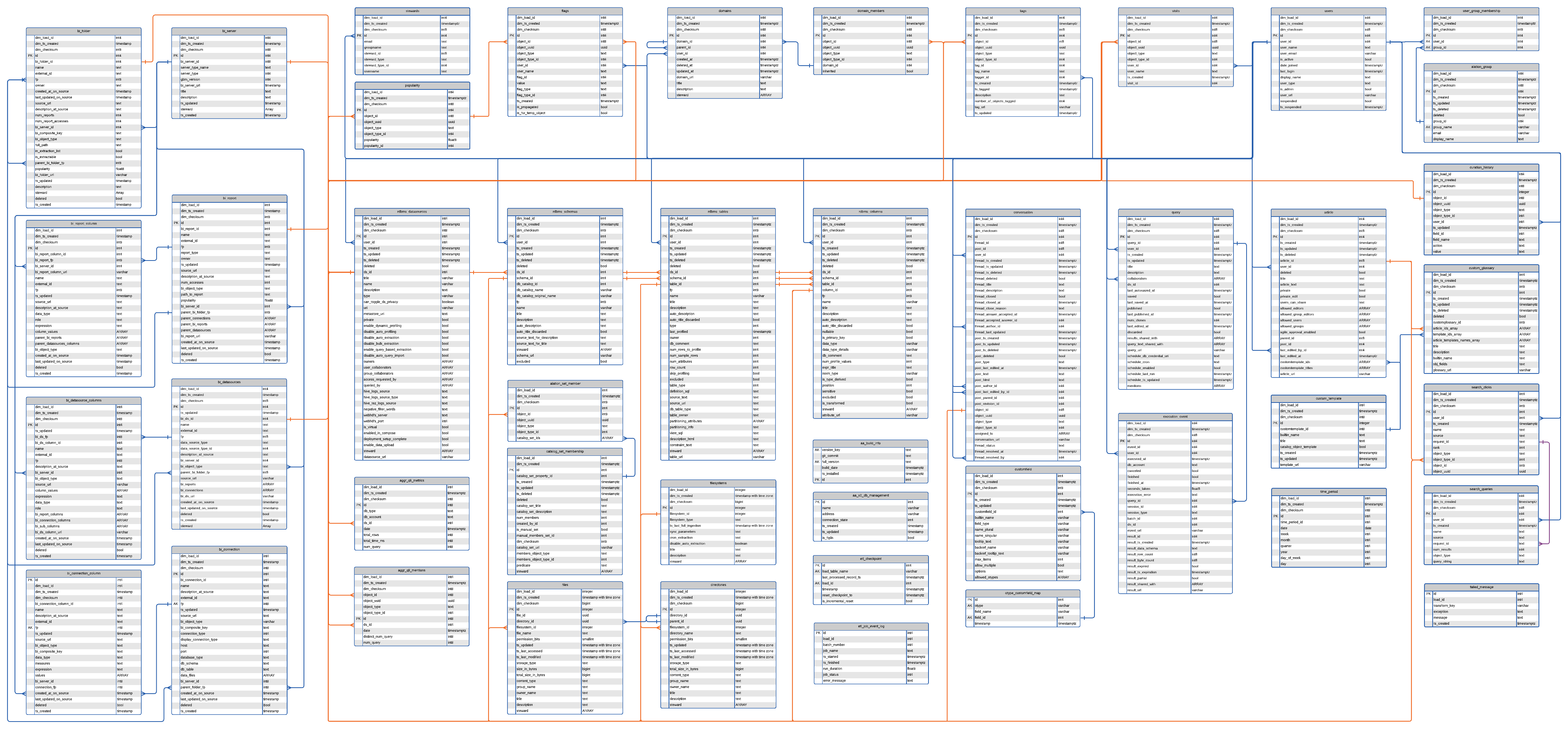
Using Compose¶
Users with access to the Alation Analytics V2 database can query it in Compose after they connect with their individual account.
